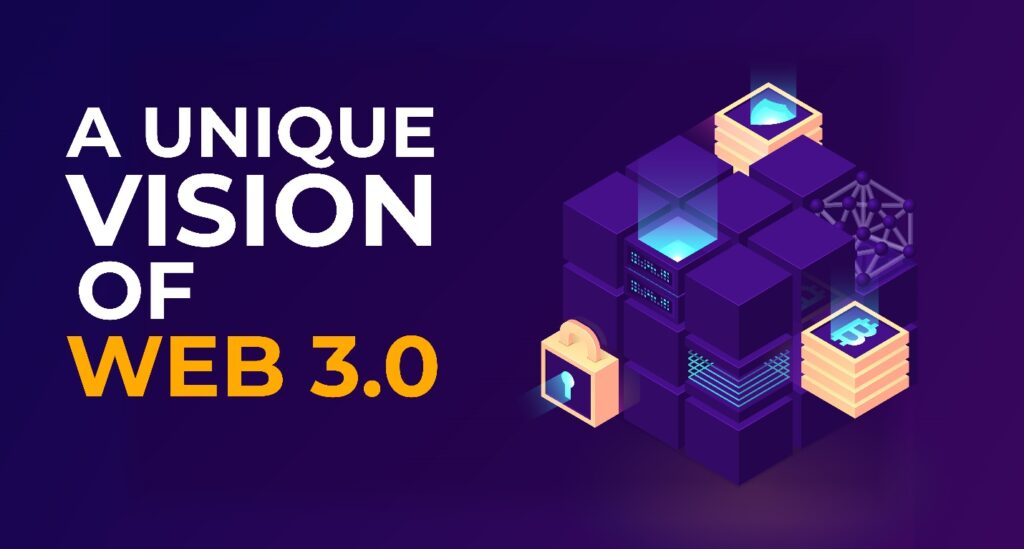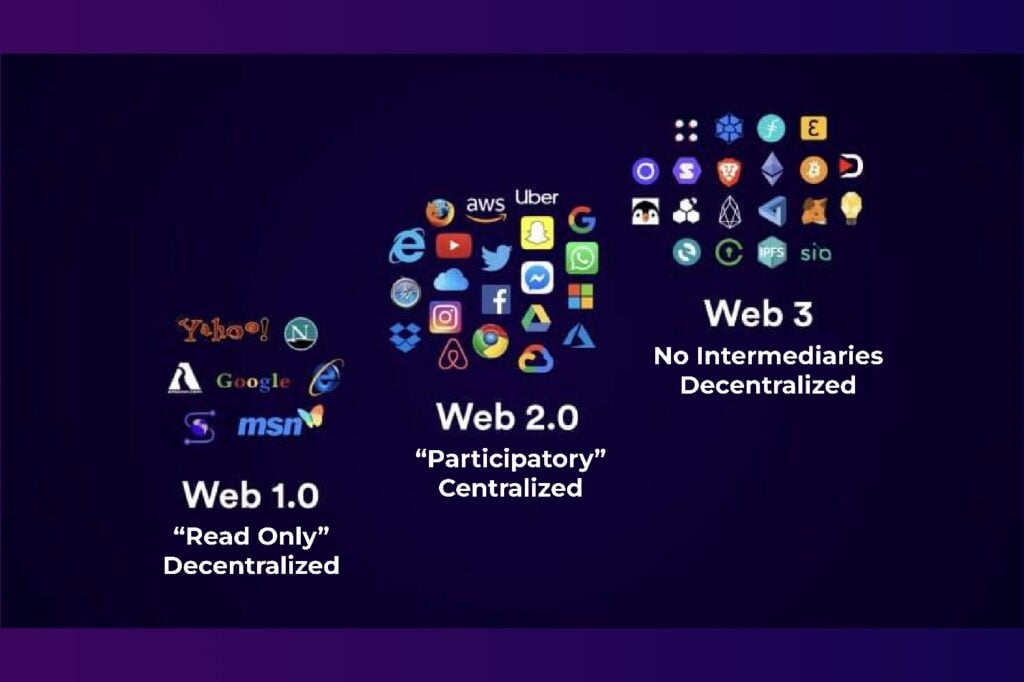
Nowadays, we are seeing the word web 3.0 everywhere, but what actually is web 3.0?
We all know what is a website, how they work and how to make a website, but what comes with the name as defined by Web 3.0 development?
Well, I’m going to go a little deep with this thing and expose that what you all are missing is a really big thing.
I can assure you that if you’re here reading, there’s a future for you as it will be the future of the internet.
So let’s explore Web 3.0
What is this Web 3.0?
Web as we know it is evolving. With the rise of blockchain technology, a new era of the internet is emerging – one that is more secure, transparent, and decentralized. This is web 3.0.
Whereas the first and second generations of the internet were defined by centralization like Facebook, Google, and Amazon. Here you can see in the below image what are web 1, 2 and 3.

Web 3.0 has several advantages. For one, it makes the web more secure, as there is no central database that can be hacked. It also gives users more control over their data, as it is stored on their computers instead of on centralized servers. Finally, decentralization makes the web more efficient, as there is no need for intermediaries (such as banks or governments) to facilitate transactions.
Web 3.0 is still in its early stages, but there are already several projects underway that are building the infrastructure for this new internet. One of the most promising is the Ethereum blockchain, which is designed to power decentralized applications (dApps).
Other projects include Blockstack, a decentralized platform for app development, and IPFS, a protocol that enables distributed file storage. With these and other initiatives, web 3.0 is well on its way to becoming a reality.
Still didn’t get it? Well, let me define some crazy features of web 3.0 then you will try harder to learn about it.
Features of Web 3.0

-
Semantic Web:
Machines rather than humans process the data. It uses Artificial intelligence to connect and link data and makes it feels like a real world wide web.
-
Decentralized Storage:
As mentioned above, one of the defining features of web 3.0 is decentralization. This also extends to storage, with several projects working on decentralized alternatives to traditional centralized services like Dropbox and Google Drive.
-
Tokenization:
One of the key features is tokenization. This refers to the process of representing real-world assets with digital tokens on a blockchain. This can be used for a wide range of assets, including property, art, and even loyalty points.
-
Programmable Money:
The ability to program money is another key feature of web 3.0. This means that transactions can be automatically executed when certain conditions are met – for example, a contract could stipulate that a payment is made only if a product is delivered on time.
-
3D Graphics:
Another exciting feature of web 3.0 is the rise of 3D graphics. With the help of virtual reality and augmented reality, users will be able to experience the internet in a whole new way. This will open up new possibilities for online shopping, entertainment, and education.
-
Improved Privacy:
Another benefit of decentralization is improved privacy. With data stored on users’ computers instead of on centralized servers, there is less risk of it being hacked or leaked. Additionally, decentralization makes it easier to build applications that respect users’ privacy by design.
-
Increased Efficiency:
One of the advantages of web 3.0 is that it is designed to be more efficient than the current web. This is because there is no need for intermediaries to facilitate transactions. Additionally, decentralization can help reduce latency and improve scalability.
These are just a few of the most exciting features of web 3.0. With the rise of blockchain technology, the possibilities are endless. We are only just beginning to scratch the surface of what’s possible with this new internet.
As the infrastructure for this new internet is built, we can expect to see even more innovative applications and use cases emerge.
Impact of Web 3.0 on our lives

The potential impact of web 3.0 on our lives is huge. With its focus on decentralization, security, and privacy, it has the potential to create a more open and accessible internet for everyone.
One of the most important aspects of web 3.0 is its focus on privacy. With data stored on users’ computers instead of on centralized servers, there is less risk of it being hacked or leaked. Additionally, decentralization makes it easier to build applications that respect users’ privacy by design.
This is a major improvement over the current state of the internet, where our data is constantly being collected and sold by companies without our consent. With the latest web development, we will have more control over our data and who has access to it.
Another major impact of it will be its effect on the economy. With the rise of blockchain technology, we are already seeing the emergence of a new type of economy – the decentralized economy. In this new economy, businesses and individuals can interact directly with each other without the need for intermediaries. This could lead to a more efficient and fairer economy, as well as new opportunities for businesses and entrepreneurs.
Finally, it has the potential to improve democracy by making it easier for people to participate in decision-making processes. With the help of decentralized applications, people will be able to vote on issues that affect them directly. This could lead to a more responsive and accountable government.
Web 3.0 is still in its early stages, but it is already clear that it has the potential to revolutionize the internet as we know it.
Conclusion
I hope now you all are well cleared about Web 3.0, which is the next generation of the internet, one that is more secure, transparent, and decentralized. This new internet is powered by blockchain technology and promises to revolutionize the way we use the internet. With several exciting features, web 3.0 is well on its way to becoming a reality.
Related Article: Meta AI Technology: Introduction, Structure, Example, Uses